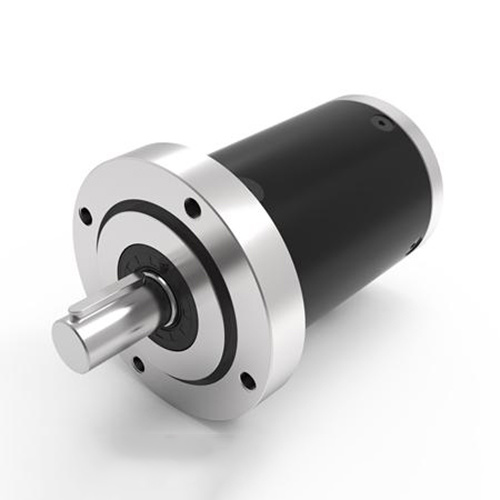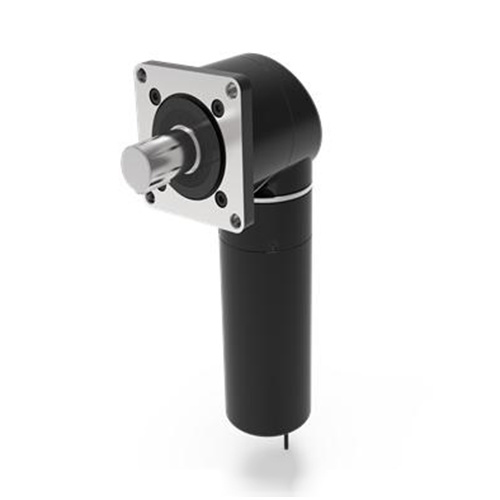Unleashing the Power: The Ultimate Guide to Gear Motors in Automotive Electronics
2024-09-03
Unleashing the Power: The Ultimate Guide to Gear Motors in Automotive Electronics
Table of Contents
- 1. Introduction to Gear Motors in Automotive Electronics
- 2. What Are Gear Motors?
- 3. How Gear Motors Work: The Mechanics Behind the Magic
- 4. Applications of Gear Motors in Automotive Electronics
- 5. Advantages of Using Gear Motors in Vehicles
- 6. Choosing the Right Gear Motor for Your Automotive Applications
- 7. Future Trends in Gear Motors and Automotive Electronics
- 8. Frequently Asked Questions about Gear Motors
- 9. Conclusion: The Future of Gear Motors in Automotive Technology
1. Introduction to Gear Motors in Automotive Electronics
In the ever-evolving world of automotive technology, **gear motors** have emerged as a pivotal component in enhancing vehicle performance and efficiency. These sophisticated devices transform electrical energy into mechanical motion, enabling a multitude of applications within automotive electronics. From powering window lifts to steering systems, gear motors are integral to modern vehicles, offering precise control and reliability.
This guide delves deep into the mechanics, applications, and future potential of gear motors in the automotive sector. By understanding these components, we can appreciate their role in shaping the future of automotive technology.
2. What Are Gear Motors?
Gear motors are electromechanical devices that combine a motor with a gear system to produce a specific output speed and torque. Unlike standard motors, which deliver a consistent speed, gear motors modify the output by adjusting the gear ratios, making them ideal for various applications requiring different speed and torque levels.
**Key components of gear motors include:**
- **DC or AC Motor:** The primary motor that converts electrical energy into mechanical energy.
- **Gearbox:** A mechanical assembly that modifies the motor's output parameters to suit specific applications.
- **Shaft:** The rotating part that transmits torque to the load.
By pairing these components, gear motors can effectively deliver the required performance for diverse tasks in automotive electronics.
3. How Gear Motors Work: The Mechanics Behind the Magic
Understanding the workings of gear motors requires a look at both the motor and gearbox functions. The motor creates rotational energy, which is then transferred to the gearbox. The gearbox, consisting of various gears, modifies this energy to achieve the desired torque and speed.
**The gear ratio plays a crucial role:**
- **High Gear Ratio:** Reduces speed but increases torque, suitable for applications requiring significant force, like electric power steering.
- **Low Gear Ratio:** Increases speed but reduces torque, ideal for applications like wipers or window lifts.
This interplay between the motor and gearbox allows for customized solutions in automotive applications, enhancing overall vehicle performance.
4. Applications of Gear Motors in Automotive Electronics
Gear motors are employed in a variety of automotive applications, showcasing their versatility and importance. Here are some common uses:
4.1 Power Windows
Gear motors are commonly used in power window systems, providing the necessary force to raise and lower windows efficiently.
4.2 Electric Steering Systems
In electric power steering, gear motors facilitate precise control, enhancing safety and responsiveness while reducing overall vehicle weight.
4.3 Seat Adjustments
Power seat adjustments rely on gear motors to provide smooth and accurate movements, enhancing passenger comfort.
4.4 Windshield Wipers
Gear motors ensure efficient operation of windshield wipers, adapting speed and torque to various weather conditions.
4.5 Sunroofs and Moonroofs
These mechanisms utilize gear motors to provide controlled opening and closing, improving user experience and vehicle aesthetics.
5. Advantages of Using Gear Motors in Vehicles
The integration of gear motors in automotive systems offers numerous benefits:
5.1 Enhanced Efficiency
Gear motors improve energy efficiency by optimizing the motor's output, leading to better fuel economy and reduced emissions.
5.2 Precision Control
The ability to fine-tune speed and torque allows for more precise control over various automotive systems, enhancing safety and performance.
5.3 Compact Design
Modern gear motors can be designed to occupy minimal space, facilitating their integration into various automotive systems without compromising design.
5.4 Reliability and Durability
Quality gear motors are built to withstand harsh automotive conditions, ensuring longevity and reducing maintenance costs.
5.5 Cost-Effectiveness
While the initial investment may be higher, the long-term savings in energy and maintenance make gear motors a cost-effective choice for automotive manufacturers.
6. Choosing the Right Gear Motor for Your Automotive Applications
Selecting the appropriate gear motor for a specific application requires careful consideration of several factors:
6.1 Torque Requirements
Identify the necessary torque to perform the task effectively. The required torque will guide the selection of the appropriate gear ratio and motor type.
6.2 Size and Space Constraints
Consider the available space within the vehicle for the gear motor. Compact designs may be necessary for certain applications.
6.3 Power Supply Compatibility
Ensure that the gear motor is compatible with the vehicle’s electrical system, whether it operates on DC or AC current.
6.4 Environmental Conditions
Evaluate the environment where the gear motor will operate—consider factors such as temperature, humidity, and exposure to elements.
6.5 Manufacturer Reputation
Choose gear motors from reputable manufacturers known for quality and reliability, as this can significantly impact overall performance.
7. Future Trends in Gear Motors and Automotive Electronics
The automotive industry is rapidly advancing, and gear motors are at the forefront of this evolution. Here are some emerging trends:
7.1 Integration with Smart Technology
The trend towards smart vehicles will likely enhance the role of gear motors, enabling more sophisticated control systems and automation.
7.2 Increased Focus on Sustainability
As manufacturers prioritize sustainability, gear motors will benefit from innovations that improve energy efficiency and reduce environmental impact.
7.3 Development of Advanced Materials
The use of lightweight, durable materials in gear motor construction can lead to improved performance and reduced weight in automotive applications.
7.4 IoT Connectivity
The integration of gear motors with Internet of Things (IoT) technology will enable real-time monitoring and predictive maintenance, enhancing reliability.
7.5 Electric and Hybrid Vehicles
The rise of electric and hybrid vehicles will drive demand for high-performance gear motors that optimize energy use and enhance vehicle efficiency.
8. Frequently Asked Questions about Gear Motors
8.1 What is the lifespan of a gear motor?
The lifespan of a gear motor varies depending on quality, usage, and environmental conditions but can typically range from 10,000 to 20,000 hours of operation.
8.2 How do I know which gear motor to choose?
Consider factors such as torque requirements, size constraints, power supply compatibility, and environmental conditions to choose the right gear motor for your application.
8.3 Are gear motors suitable for all automotive applications?
While gear motors are versatile, they may not be suitable for applications requiring extremely high speeds or specialized functions. Always evaluate specific application needs.
8.4 How do I maintain my gear motor?
Regular inspection, ensuring proper lubrication, and monitoring for unusual sounds or vibrations can help maintain gear motor performance.
8.5 What advancements are being made in gear motor technology?
Advancements include improved energy efficiency, integration with smart technology, and the development of lightweight materials to enhance performance.
9. Conclusion: The Future of Gear Motors in Automotive Technology
Gear motors are indispensable components in automotive electronics, contributing to enhanced performance, efficiency, and reliability. As the automotive industry continues to evolve, the importance of gear motors will only grow, driven by advancements in technology and an increased focus on sustainability.
Understanding the mechanics, applications, and future trends of gear motors enables us to appreciate their critical role in shaping the vehicles of tomorrow. By staying informed and adapting to these changes, manufacturers and consumers alike can harness the full potential of gear motors, paving the way for a new era in automotive innovation.
Related news
Anhui High Precision Gear Transmission Co., Ltd
Chuzhou High Precision New Energy Techonology Co., Ltd
language
English
العربية
বাংলাদেশ
Български
Hrvatski
Česky
Dansk
Nederland
 Esperanto
Esperanto
Slovenski
Filipino
Suomi
Français
Maori
 Shqiptare
Shqiptare
Georgian
 Euskara
Euskara
Deutsch
Ελλάδα
ישראל
इंडिया
Magyarország
Ísland
Indonesia
Irlanda
Italia
日本語
Sovensko
Հայաստան
한국
Kyrgyz
ປະເທດລາວ
 Zulu
Zulu
Latvian
Lithuanian
Luxembourgish
 Latinus
Latinus
Macedonian
Малайская
Maltese
Монгол улс
 Cymraeg
Cymraeg
ဗမာ
 தமிழ்
தமிழ்
नेपाल
Norge
ایران
Polska
Portugal
România
Российская
Србија
 Slovak
Slovak
Србија
 Slovak
Slovak
Bosanski
Slovenian
Беларус
España
Sverige
Точик
ประเทศไทย
Türk
Azərbaycan
Uzbek
 Afrikaans
Afrikaans
Việt Nam
Sales frontline:
Contact: Joanna
WhatsApp:8613989800585
E-mail: info@dxtlexp.com
Copyright © 2022 Anhui High Precision Gear Transmission Co., Ltd | Business license | Powered by www.300.cn | SEO







